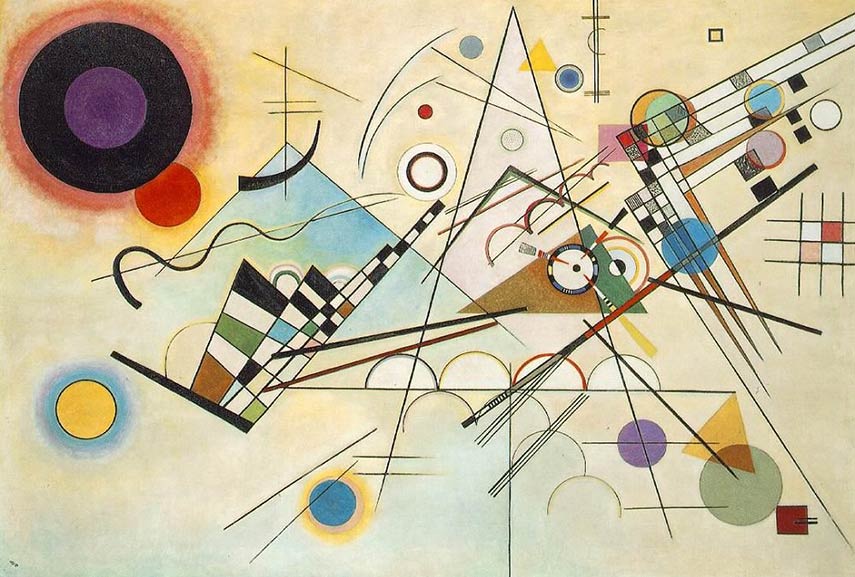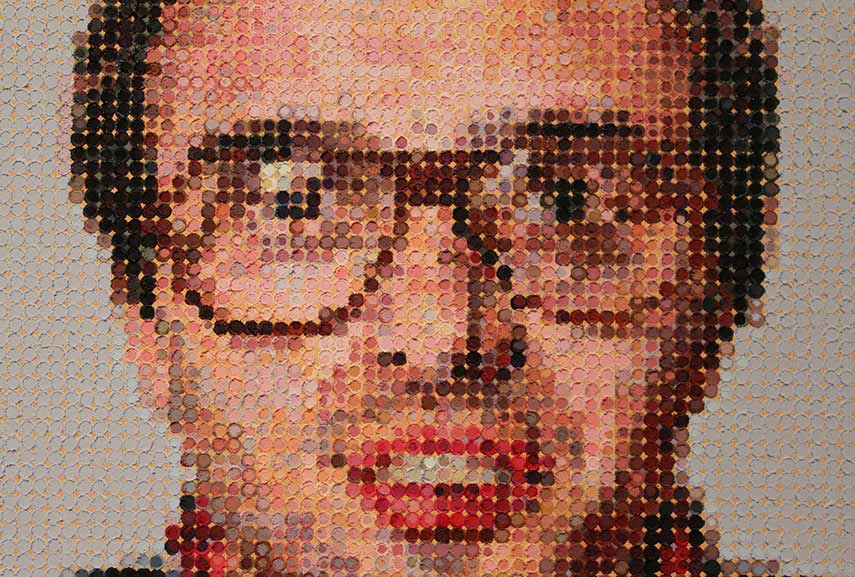How Can We Make Rhythm With Color in Art Easy
Rhythm in art is possibly one of the most difficult and most important ingredients required for building an interesting composition that would first of all catch the viewers' eye and continues to move the eye in and around all the parts of the artwork. It is very demanding to explain how one builds a rhythm within the visual art field, it is much easier to understand it if we were to speak about music [1]. The music we hear and the different beats produce a physical reaction from us, making us move our bodies to the rhythm, allowing us to express the inner sensations sound produced.
In visual art, in most cases, the work is static. It is with the help of lines, shapes, color, brushstrokes, light, and space, that the artist is able to produce the rhythm, important for the creation of the movement, for the creation of life within a flat surface. It is the comprehension of the abstract that art principles, in the end, allow us to do, and rhythm is just one of the fundamentals that first of all help us to understand and build a most interesting composition, help us to convey a certain emotion, and help to, in a sense, manipulate or guide the public's attention to the focus of the piece. Today, we will concentrate on explaining what is the rhythm in art and why is it important?

The Definition of the Rhythm
Along with balance, proportion, emphasis, variety, movement, and harmony, rhythm is one of the main principles of art. Often referred to as principles of organization or design principles, they help to organize the basic elements of art, which include, line, shape, form, value, color, space, and texture [2]. Rhythm refers to the movement or the visual flow within a certain piece. It is sometimes also referred to as a tempo or a beat created that invites the eye to enter into the journey of the artist's soul displayed on the canvas, or to help the eye travel and reach its point of focus. Like in music, the rhythm in the art can vary in its speed. There are certain compositions that seem more static, more calm, and more relaxed, producing the feeling of peace, order, and structure, while on the other hand, certain works produce a sense of chaos, disorder, and loss of balance, that most of us would link to the inner expressions of the artists' soul. While talking about the rhythm in art, the artist Andrew Dasburg once stated:
In my use of color I aim to reinforce the sensation of light and dark, to develop the rhythm to and from the eye by placing on the canvas the colors which, by their depressive or stimulating qualities, approach or recede in the rhythmic scheme of the picture.

Types of Visual Rhythm - Why Is It Different From Repetition and Pattern?
In a similar way to repetition, rhythm stands for the arrangement of art's elements. Like with rhyme in literature, beats in music, there are few rules, or better to say basic types of visual movement, that artists use and manipulate with for the production of the desired effect. The arrangement of parts can be done following a regular space and interval between them and this would define a regular rhythm. Along with this type of rhythm, we also have random arrangements, which avoid any formal structure, alternating rhythms, that change the dynamic, the focus, and the speed of the repeated motif, progressive rhythm, that occurs with the gradual increase or decrease in the size, color, number, or some other qualities of repeated elements. Joining these mentioned variations of movement is a flowing rhythm that bends and curves motifs and the space within the paintings or drawings.[3]
More often than not, artists, in the end, choose where to place their elements guided by an inner compass, and unlike patterns, rhythm to that effect is not always mathematically structured. Depending and aided by line, color, and shapes, rhythm allows a greater amount of freedom of interpretation, but at the same time, few universal rules are applied. The application of these rules varies from artist to artist, and rhythm is also an indicator not only of individualism but also of cultural beliefs as well.

Famous Examples of Rhythm in Art
One of the best-known artists which aimed to join music and his abstract production is Wassily Kandinsky. In his famous essay On the Spiritual in Art, Kandinsky attempted to organize his views of color and his associations of each color to particular sound of instruments.[4] This helped him to create compositions that seemed vibrant and alive yet at the same time tranquil, conveying ideas of spirituality. Joining his efforts in exploring color harmony that aids the creation of a rhythm is the production of Paul Klee. Relying on a small format, Klee used color and repetition of shapes to create a sense of unfolding parallel to music. The connection to music and dance was also important for the father of the Fauvism movement, Henri Matisse, where his playful line and choice of vibrating colors allowed him to play with movement and produce works that truly jumped in front of our eyes.
Be sure to check out works by Henri Matisse on our marketplace!
With the birth of expressionism, and the famous Post-Impressionism artist, Vincent Van Gogh, the violent brushstrokes aided the presentation of the unstable and dynamic rhythm changes of the artist's emotions, while on the other hand production of Piet Mondrian, and his highly balanced compositions created an atmosphere of control. The alternating rhythm of mesmerizing patterns produced by M. C. Escher showcase the movement, vibration, and the trickery to the eye that confuses and creates movement within the static surface, and it is no surprise that many link his production to the Op Art. The regular application of color and shapes, placed in similar intervals, such as in grids, are at the core of the Chuck Close production and help us to understand what regular rhythm is all about.
See more works by Chuck Close here!
There are a great number of other examples we could have mentioned, but we will leave you here to start your own journey of exploring what is the rhythm in art and how it can help you build your own compositions or to help you better understand your favorite art piece.

Editors' Tip: Illustrated Elements of Art and Principles of Design
The book discusses the many ideas behind modern design and art focusing at the same time to enhance the reader's knowledge concerning the art principles, which build art and its compositions. The introduction of each of the principles is aided with the help of colorful artworks, illustrations, and photographs and also includes a hands-on activity for each of the concepts discussed. For students, art lovers this book will provide a greater understanding of how the principles build some of the most interesting art compositions and help them on their own journey as well.
Sources:
- arthistory.about.com
- youtube.com
- flyeschool.com
- digitalcommons.unl.edu
All images used for illustrative purposes only. Featured image: Henri Matisse – Dance. Image via wikiart.org
Source: https://www.widewalls.ch/magazine/rhythm-in-art
0 Response to "How Can We Make Rhythm With Color in Art Easy"
Post a Comment